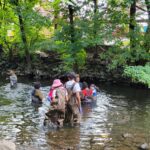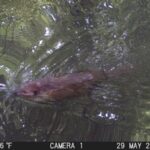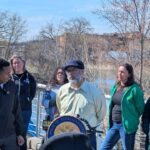Back in the days before refrigeration was invented, people got their ice the old fashioned way:they’d wait for a local lake or pond to freeze up good and thick, then go out with specially designed saws and cut the ice into handy blocks, which would then be stored in a sawdust-insulated “ice house.”
In the 1800s the “frozen water trade” was an important part of the economy of the northeastern states, and a valuable source of income for farmers during the snowed-over winter months.Apart from cooling local ice-boxes, ice was exported as far afield as India and Australia.
In this region, ice from the spring-fed Rockland Lake (near Nyack) was renowned for its purity, and the once-mighty ice industry there is today commemorated in the annual Knickerbocker Ice Festival in Rockland Lake State Park.
But while Rockland Lake ice had the “name-brand recognition,” there was at one time a great deal of ice harvesting on the Bronx River.The pond above the Snuff Mill in the Botanical Garden was used as a source of ice.Ice was also regularly harvested from the river’s ponds in the present-day Bronx Zoo until they became part of Bronx Park in the 1880s.Cope Lake, fed by the Bronx River in the northwestern corner of the Bronx Zoo at Fordham Road and Southern Boulevard, produced ice good enough to support a commercial ice-harvesting operation between 1875 and 1885.
Increasing pollution put an end to Bronx River ice harvesting well before electric refrigeration finished off the frozen water trade, but the memory serves as a reminder of how clean the waters of the Bronx River once were.
Stephen Paul DeVillo




